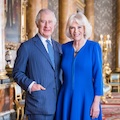Queen Victoria, supported by her consort Prince Albert, ruled through a period of great change. The Industrial Revolution and the expansion of the British Empire changed the world around them beyond recognition.
This timeline outlines key moments in the life which Victoria and Albert shared together as well as Victoria’s personal accounts of these events, extracted from her journals. Access the archive here.

The Future Queen is Born
Princess Alexandrina Victoria, daughter of the Duke of Kent and Princess Victoria of Saxe-Coburg-Saalfeld was born at Kensington Palace, fifth in line to the throne.

The Birth of Prince Albert
Albert Francis Charles Augustus Emmanuel of Saxe-Coburg-Gotha, the younger son of the duke of Saxe-Coburg-Gotha was born at Schloss Rosenau, in Bavaria and was to become the greatest influence on Victoria's life. Both Victoria and Albert were delivered by the same midwife, Charlotte Heidenreich von Siebold.
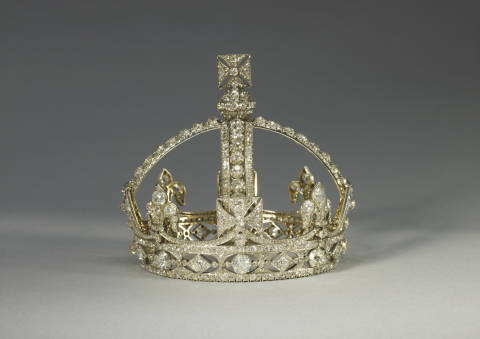
From Princess to Queen
On 19th June 1837, Victoria went to bed a Princess. She woke the next day, a Queen:
‘I was awoke at 6 o'clock by Mamma, who told me that the Archbishop of Canterbury and Lord Conyngham were here, and wished to see me. I got out of bed and went into my sitting-room (only in my dressing-gown), and alone, and saw them. Lord Conyngham (the Lord Chamberlain) then acquainted me that my poor Uncle, the King, was no more, and had expired at 12 minutes p.2 this morning, and consequently that I am Queen.’

A Musical Life
Prince Albert expressed his fondness of the Princess through the medium of music. They played and performed duets together. Here is a sample of Ein Ständchen' ('a serenade'), apparently composed by Prince Albert for the Queen to be. The orchestration premiered at the Royal College of Music Gala, fittingly hosted at Buckingham Palace in February 2017.

The Coronation
Approximately 400,000 people lined the streets to get a glimpse of their new Sovereign.
‘Their good-humour and excessive loyalty was beyond everything, and I really cannot say’ reads Queen Victoria's journal entry from the day.
On her Accession, Buckingham Palace became The Queen’s (and later The Prince’s) official residence. Victoria was the first Sovereign to use the palace as her home.
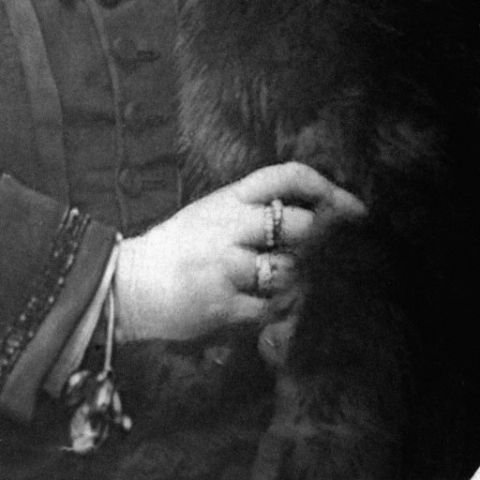
Engaged
Royal tradition dictated that a reigning monarch could not be proposed to… so Victoria proposed to Albert.
Victoria describes in her journal how she told Albert that it would 'make me too happy if he would consent to what I wished (to marry me); we embraced each other over and over again, and he was so kind, so affectionate; oh! to feel I was, and am, loved by such an angel as Albert, was too great delight to describe' - 15 October 1839.

Married at St James’ Palace Chapel
Dressed in white, Queen Victoria set the trend for future brides.
Queen Victoria sketched this simple white dress design, trimmed with sprays of roses worn by her dozen bridesmaids. This sketch was given to her Mistress of the Robes, The Duchess of Sutherland, who supervised the making of the dresses.

Queen Victoria and Prince Albert's children
Their marriage produced nine children. Five girls (Victoria (1840), Alice (1843), Helena (1846), Louise (1848) and Beatrice (1857)) and four boys (Albert Edward (1841), Alfred (1844), Arthur (1850) and Leopold (1853)).

Etching
Albert believed in the power of art and design to improve the quality of life for everyone. By 1841, Victoria and Albert had both taken up etching as a hobby and often worked on the same piece together. This sketch depicts Victoria, Princess Royal and Albert Edward, Prince of Wales as young children playing together.
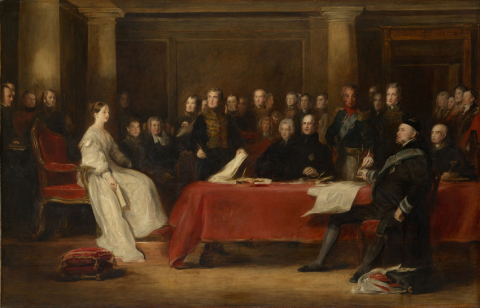
The Death of Lord Melbourne
The former Prime Minister had played an important role in tutoring Victoria in government and politics. It has been said that after his death, The Prince became The Queen’s advisor, essentially acting as her Private Secretary.

The Great Exhibition
‘This day is one of the greatest & most glorious days of our lives, with which, to my pride & joy the name of my dearly beloved Albert is for ever associated!’ reads Queen Victoria's journal.
Prince Albert’s patronage of the arts in Britain led to the creation of the Great Exhibition of 1851 – the first international display of design and manufacturing. Notable visitors including Charles Dickens, Charlotte Brontë, Karl Marx and Charles Darwin.
The South Kensington Museum (now the V&A) was born out of the Great Exhibition. Through gifts, loans and support Victoria and Albert became dedicated champions of the museum.

Public Appearances
The married couple were extremely popular and frequently made public appearances. They began the familiar practice of making official visits, attending the opening of factories and hospitals. They dressed as an ‘ordinary’ couple and like many women, Victoria would often wear a bonnet in public.

The Photographic Society
Queen Victoria and Prince Albert took an early interest in this new ground-breaking science. They donated many photographs to the South Kensington museum and became patrons of the Photographic Society. Prince Albert commissioned photographs to document life in the Royal Household, family gatherings and visits from important guests.
The Photographic Society retains its Royal Patronage today, and The Duchess of Cambridge opened the Victoria and Albert Museum's new photography centre in March 2018.
Victoria and Albert re-enacted their wedding for this photograph in 1854.

The Prince's New Title
Queen Victoria conferred the title of Prince Consort on Albert in recognition of his support and counsel, and his contribution to the Royal Family and the Monarchy as an institution.

The Death of Prince Albert
Prince Albert died of Typhoid Fever aged 42 in The Blue Room, Windsor Castle. The Queen used the room to pray during times of distress. Fresh flowers were displayed in the room daily. Victoria famously wore black and a widow’s cap for the rest of her reign.
(In this portrait by Alexander Melville, Queen Victoria wears a black lace cap and ermine stole around her neck- both reminders of her beloved Albert.)
Final Resting Place
Victoria and Albert were buried together at Frogmore Mausoleum.
Victoria had asked for certain items to be placed beside her in her coffin, including rings, lockets, casts of the children’s hands and Albert’s dressing gown.
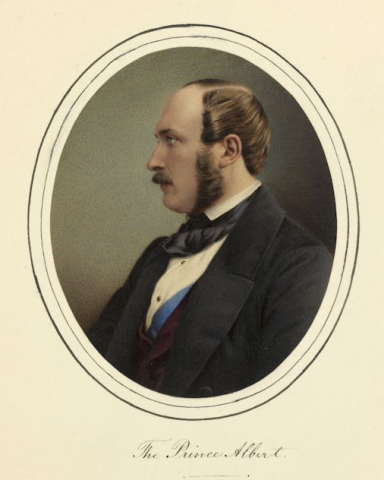
A Lasting Legacy
To this day, there are over 500 works created, designed or compiled by The Prince still in the Royal Collection Trust.





